Foundation to Year 2
Learning in Digital Technologies builds on concepts, skills and processes developed in the Early Years Learning Framework. It focuses on developing foundational skills in computational thinking and an awareness of personal experiences using digital systems.
By the end of Year 2, students will have had opportunities to create a range of digital solutions through guided play and integrated learning, such as using robotic toys to navigate a map or recording science data with software applications.
In Foundation - Year 2, students begin to learn about common digital systems and patterns that exist within data they collect. Students organise, manipulate and present this data, including numerical, categorical, text, image, audio and video data, in creative ways to create meaning.
Students use the concept of abstraction when defining problems, to identify the most important information, such as the significant steps involved in making a sandwich. They begin to develop their design skills by conceptualising algorithms as a sequence of steps for carrying out instructions, such as identifying steps in a process or controlling robotic devices.
Students describe how information systems meet information, communication and/or recreational needs.
Through discussion with teachers, students learn to apply safe and ethical practices to protect themselves and others as they interact online for learning and communicating.
(source: www.australiancurriculum.edu.au)
Achievement Standard
By the end of Year 2, students describe the purpose of familiar products, services and environments and how they meet a range of present needs. They list the features of technologies that influence design decisions and identify how digital systems are used.
Students identify needs, opportunities or problems and describe them. They collect, sort and display familiar data from a range of sources and recognise patterns in data. Students record design ideas using techniques including labelled drawings, lists and sequenced instructions. They design solutions to simple problems using a sequence of steps and decisions. With guidance, students produce designed solutions for each of the prescribed technologies contexts. Students evaluate their ideas, information and solutions on the basis of personal preferences and provided criteria including care for the environment. They safely create solutions and communicate ideas and information face-to-face and online.
(source: www.australiancurriculum.edu.au)
Achievement Standard
By the end of Year 2, students identify how common digital systems (hardware and software) are used to meet specific purposes. They use digital systems to represent simple patterns in data in different ways.
Students design solutions to simple problems using a sequence of steps and decisions. They collect familiar data and display them to convey meaning. They create and organise ideas and information using information systems, and share information in safe online environments.
(source: www.australiancurriculum.edu.au)
- Plus Plan
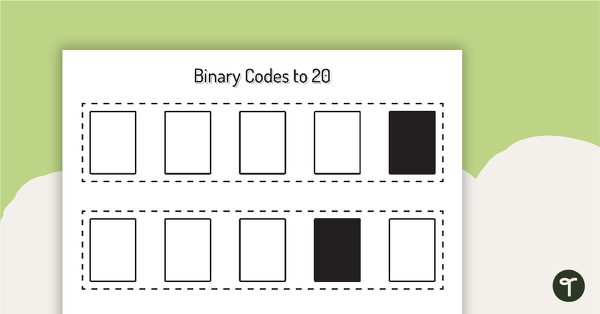
Binary Codes without Guide Dots to 20 Cards
Coding cards for teachers to use when teaching about the total numeric value of a bit code.
- Plus Plan
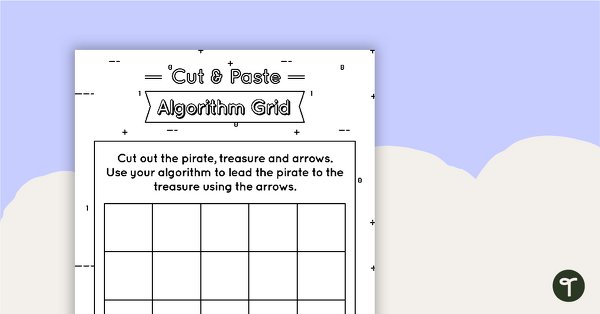
Cut and Paste Algorithm Grid - Black and White
An activity for students to use when learning about algorithms (directions).
- Plus Plan
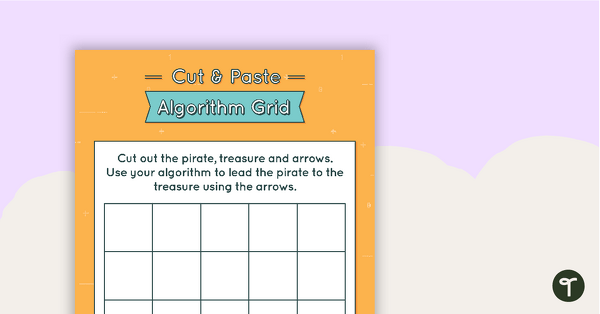
Cut and Paste Algorithm Grid - Colour
An activity for students to use when learning about algorithms (directions).
- Plus Plan
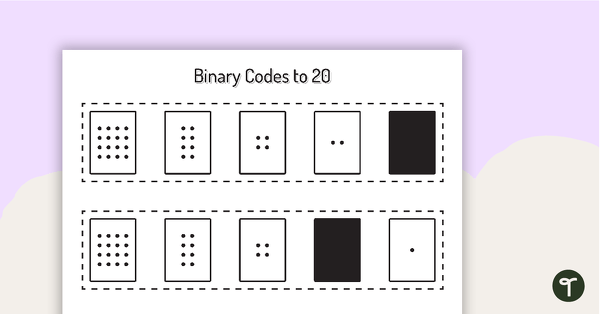
Binary Codes with Guide Dots to 20 Cards
Coding cards for teachers to use when teaching about the total numeric value of a bit code.
- Plus Plan
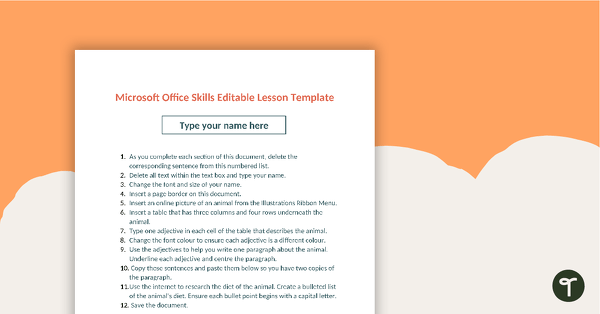
Editable Word Processing Template
An editable template for students to consolidate word processing skills.
- Plus Plan
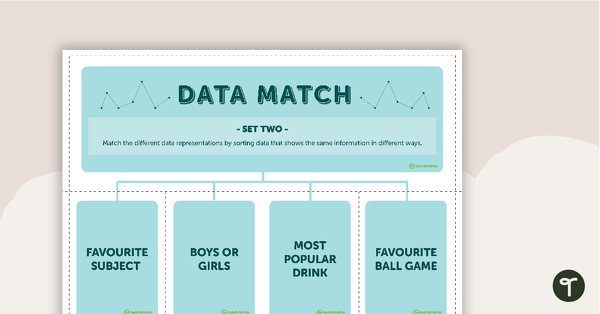
Data Match-Up Cards (Set 2)
A match-up activity for students to use when exploring data.
- Plus Plan
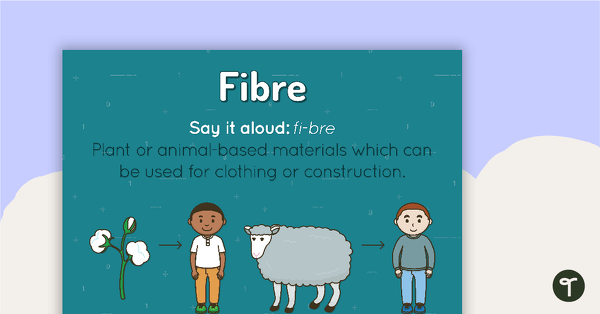
Fibre Poster
A poster showing the definition and an example of fibre.
- Plus Plan
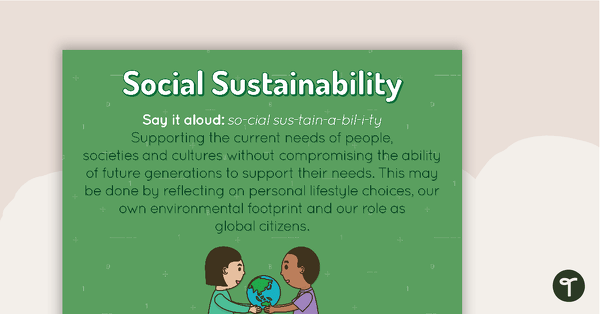
Social Sustainability Poster
A poster showing the definition and an example of social sustainability.
- Plus Plan
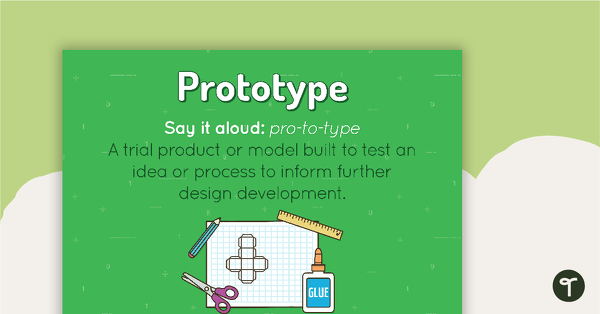
Prototype Poster
A poster showing the definition and an example of a prototype.
- Plus Plan
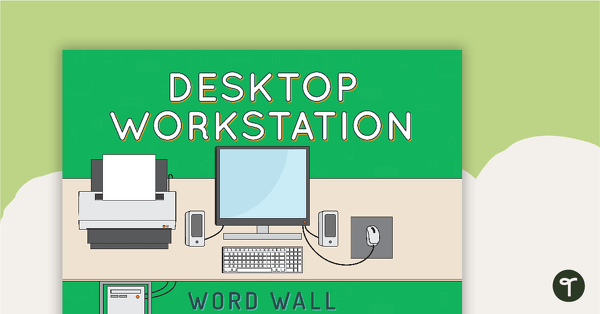
Desktop Workstation Word Wall
A set of labels for a desktop workstation.
- Plus Plan
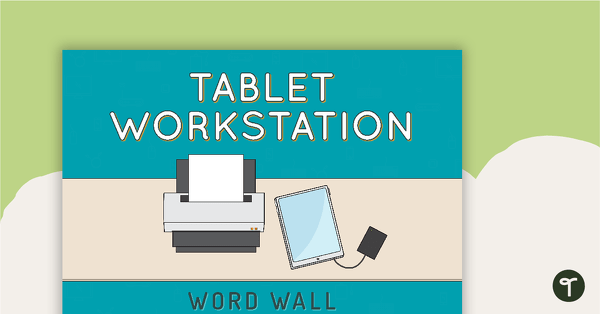
Tablet Workstation Word Wall
A set of labels for a tablet workstation.
- Plus Plan
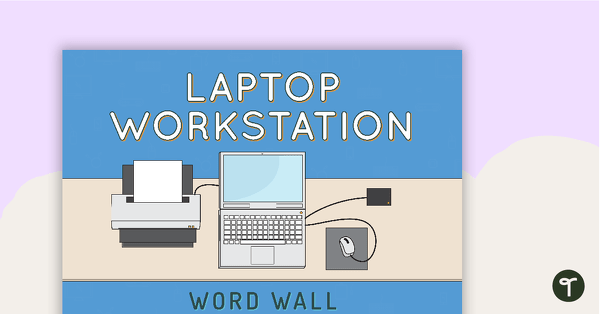
Laptop Workstation Word Wall
A set of labels for a laptop workstation.
- Free Plan
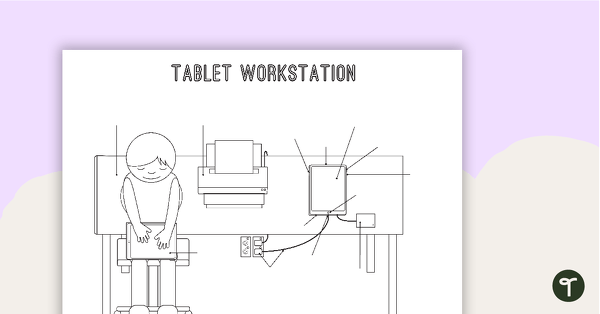
Technology Workstation Worksheet - Tablet
A worksheet for students to label the key components of a tablet workstation.
- Plus Plan
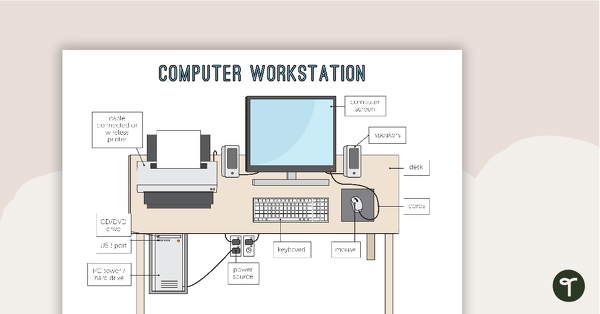
Technology Workstation Posters - Computer, Laptop & Tablet
Three posters highlighting the key components of a desktop, laptop or table workstation.
- Plus Plan
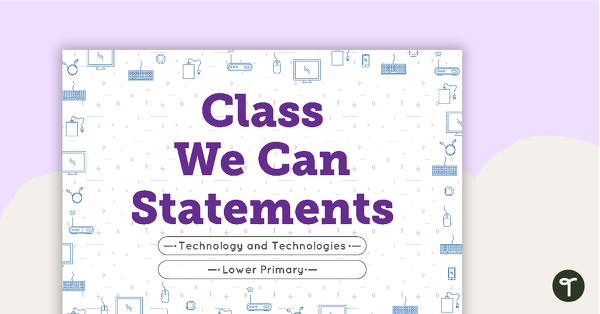
Class 'We Can' Statements - Technology and Technologies (Lower Primary)
A set of 7 class 'We can' statement cards linked to the Australian Digital Technologies Curriculum.
- Plus Plan
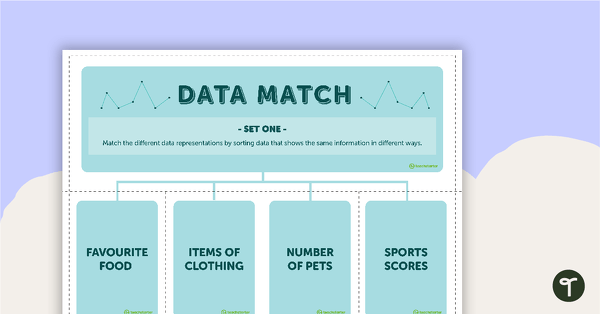
Data Match-Up Cards (Set 1)
A match-up activity for students to use when exploring data.
- Plus Plan
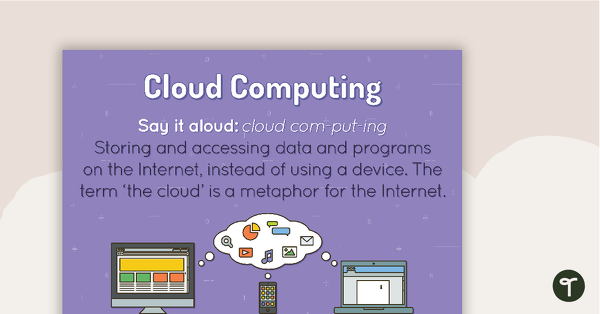
Cloud Computing Poster
A poster showing the definition and an example of cloud computing.
- Plus Plan
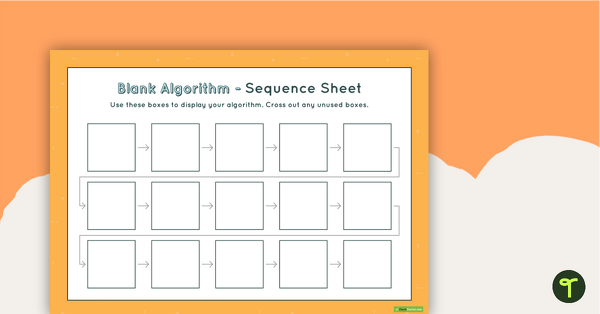
15-Step Algorithm Sequence Sheet - Middle Primary
A worksheet for students to use when writing an algorithm.
- Free Plan
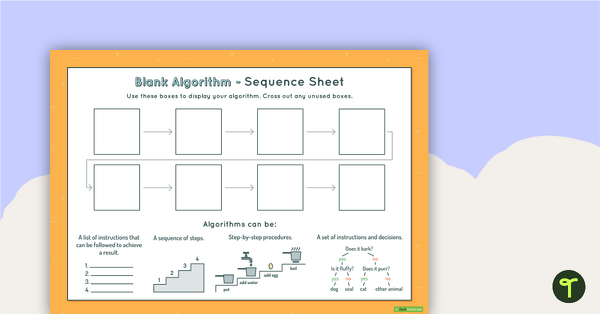
8-Step Algorithm Sequence Sheet - Middle Primary
A worksheet for students to use when writing an algorithm.
- Plus Plan
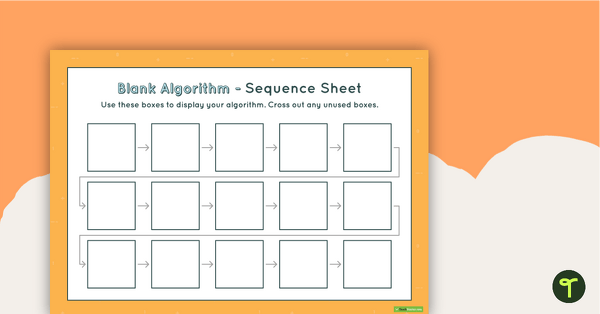
15-Step Algorithm Sequence Sheet - Lower Primary
A worksheet for students to use when writing an algorithm.
- Plus Plan
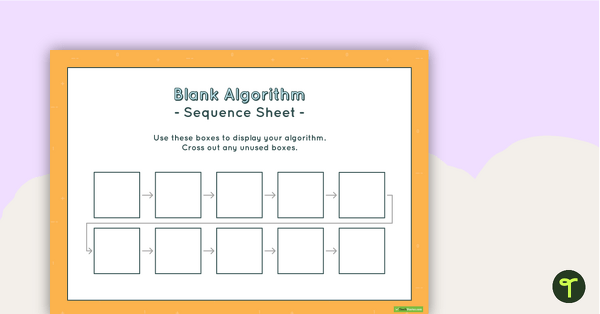
10-Step Algorithm Sequence Sheet - Lower Primary
A worksheet for students to use when writing an algorithm.
- Plus Plan
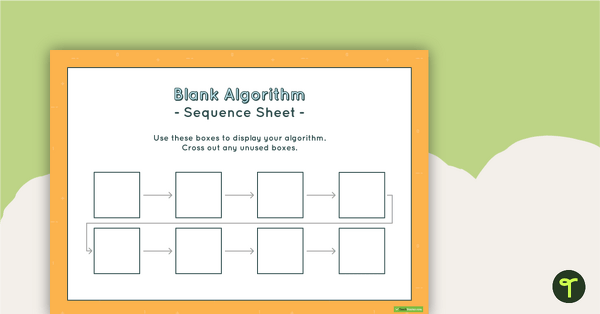
8-Step Algorithm Sequence Sheet - Lower Primary
A worksheet for students to use when writing an algorithm.
- Plus Plan
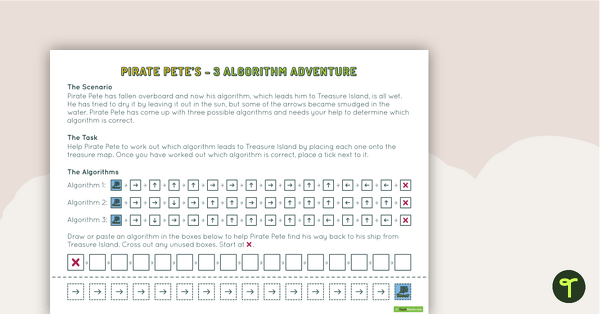
Pirate Pete’s Three Algorithm Quest
A worksheet for students to use when consolidating their understanding of algorithms.
- Plus Plan
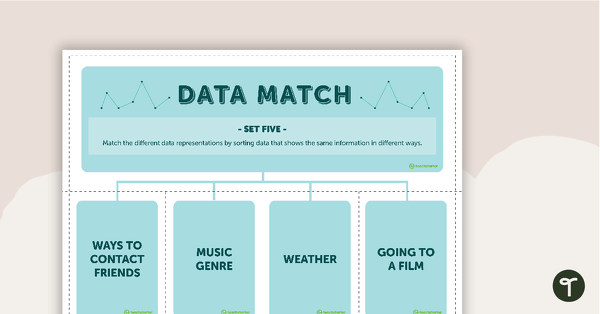
Data Match-Up Cards (Set 5)
A match-up activity for students to use when exploring data.
- Plus Plan
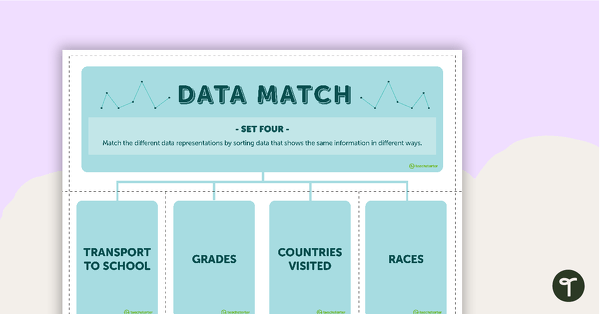
Data Match-Up Cards (Set 4)
A match-up activity for students to use when exploring data.
- Plus Plan
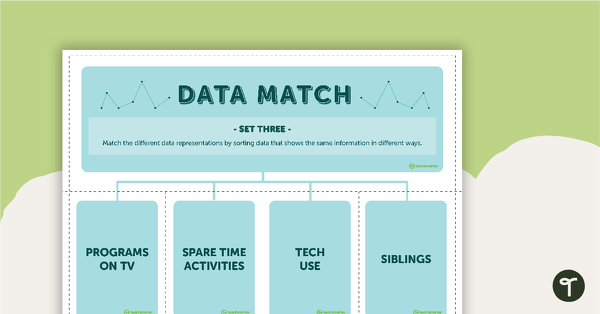
Data Match-Up Cards (Set 3)
A match-up activity for students to use when exploring data.
- Plus Plan
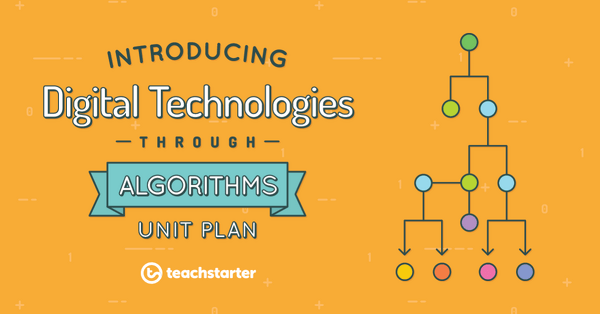
Introducing Digital Technologies Through Algorithms Unit Plan
This Technology unit has been designed to introduce digital technologies to younger students; specifically, the purpose, structure and features of algorithms.
- Plus Plan
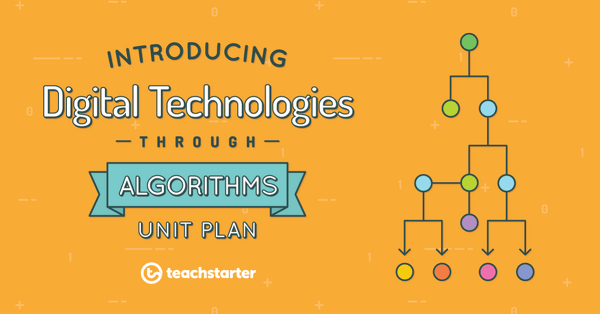
Applying Basic Algorithms
A 60 minute lesson in which students will follow a sequence of steps and identify these as an algorithm.
- Plus Plan

Creating Basic Algorithms
A 60 minute lesson in which students will consolidate understanding of algorithms by creating a set of instructions.
- Plus Plan
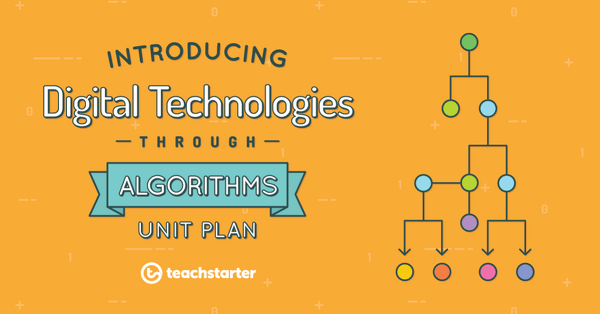
Introduction to Algorithms
A 60 minute lesson in which students will understand the concept of an algorithm by listing steps to move an object around a map.